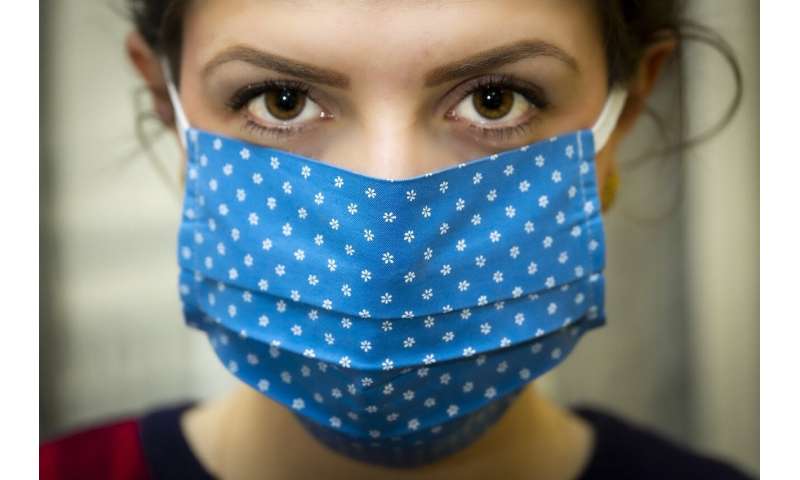Experts share what you need to know about COVID-19 as states reopen

As governments begin easing restrictions that were put in place to slow the spread of COVID-19, public health and infectious disease experts from The University of Toledo are offering insight into what you need to know about the novel coronavirus, how to protect yourself, and how to protect others.
The virus is still here. We have to act accordingly.
While the number of newly confirmed cases in many states—including Ohio and Michigan—appears to have peaked, the virus hasn’t gone away or become less dangerous.
“We all yearn for the way life was in the pre-pandemic days, and we are going to get there, but this is going to be the situation for a while,” said Dr. Brian Fink, an epidemiologist and professor of public health. “We have to respect that and continue taking the same precautions.”
Though it’s tempting to see businesses reopening and leisure activities resuming and think the threat of the virus is behind us, Fink said the reality is the novel coronavirus is still spreading across the United States.
Take steps to protect your own health and the health of others.
“People do still need to be careful,” said Dr. Jennifer Hanrahan, an associate professor of medicine and chief of infectious diseases at The University of Toledo Medical Center. “One of the worst things that people could do at this point is go out and resume their normal behavior. We would certainly have a resurgence.”
Diligent handwashing, avoiding touching your nose and mouth, staying home if you’re sick, and social distancing should all continue, UToledo experts said. Individuals who are older or high-risk because of underlying health conditions should be more careful.
Fink said there are simple things you can do. For example, when shopping, avoid picking up an item and then putting it back, and keep your distance from other shoppers. It’s also important, he said, to make decisions based not only on your own risk, but the risk of those around you.
“It’s difficult. We all want to see our friends and family,” he said. “We just have to be patient. If we’re patient and we follow the guidelines as best as possible, we’ll be back to normal sooner rather than later, even though that’s going to take time,” Fink said.
Wearing a cloth face covering does make a difference. Wear one if you’re around others.
The shifting guidance from public health officials on mask usage has caused confusion and pushback, but Hanrahan encourages people to wear a simple mask or cloth face covering when around other people.
“Two things are happening. The person wearing the mask is reducing the amount of stuff they’re putting in the environment, and they’re also reducing the amount they breath in,” she said. “It’s not going to prevent everything, but there is some protection.”
Hanrahan said face coverings, combined with continued social distancing and new measures being implemented by businesses, such as clear barriers at cash registers and limits on the number of people allowed in one place at one time, will reduce the overall risk.
Fink said its important people recognize things such as mask recommendations or requirements are being done for the benefit of everyone, not to target specific individuals.
“I always tell my students there are going to be people in the population who aren’t going to be happy. We’re seeing that,” Fink said. “But we’re putting these guidelines in place for the health and well-being of everyone.”
Individuals with pre-existing health conditions are most vulnerable, but no one is immune to the illness.
As physicians and researchers learn more about COVID-19, there are also some troubling discoveries. Along with older Americans and those who have diabetes, compromised immune systems and chronic lung diseases, Hanrahan said doctors are finding people with morbid obesity and high blood pressure are at high risk of complications.
“Hypertension alone would not necessarily be thought of as a potential problem with a viral infection, but it actually is,” she said. “For people who have those conditions or other underlying medical conditions, they really need to think about whether it makes sense for them to go to the grocery store or be around a lot of other people.”
Additionally, there are an increasing number of reports of children developing a severe inflammatory response linked to COVID-19, even when they weren’t previously sick.
“COVID-19 is not just affecting people who are at high risk for complications,” Hanrahan said.
Scientists and physicians have learned a lot about the virus, but we’re still a long way from having routine treatments or a vaccine.
The coronavirus that causes COVID-19 was completely unknown before it began spreading among people early this year. Since then, there has been a tremendous amount of research both in how the virus spreads and potential ways to treat or prevent it.
“We have learned a lot about this virus,” Hanrahan said. “Most of the spread really is by droplets, typically within a few feet of the person. The social isolation part, keeping six feet of distance, that does actually make a difference.”
Doctors also have a better idea how to manage the virus, and hundreds of drugs are being examined to potentially fight COVID-19 and its effects. Some, including the antiviral drug remdesivir, are showing promising early results. Progress also is being made in vaccine development.
However, while there is reason for hope, Hanrahan said it will take time to get any of these therapeutics in the quantities needed. Gilead Sciences, which makes remdesivir, anticipates making a million courses of that drug globally by December.
Source: Read Full Article
